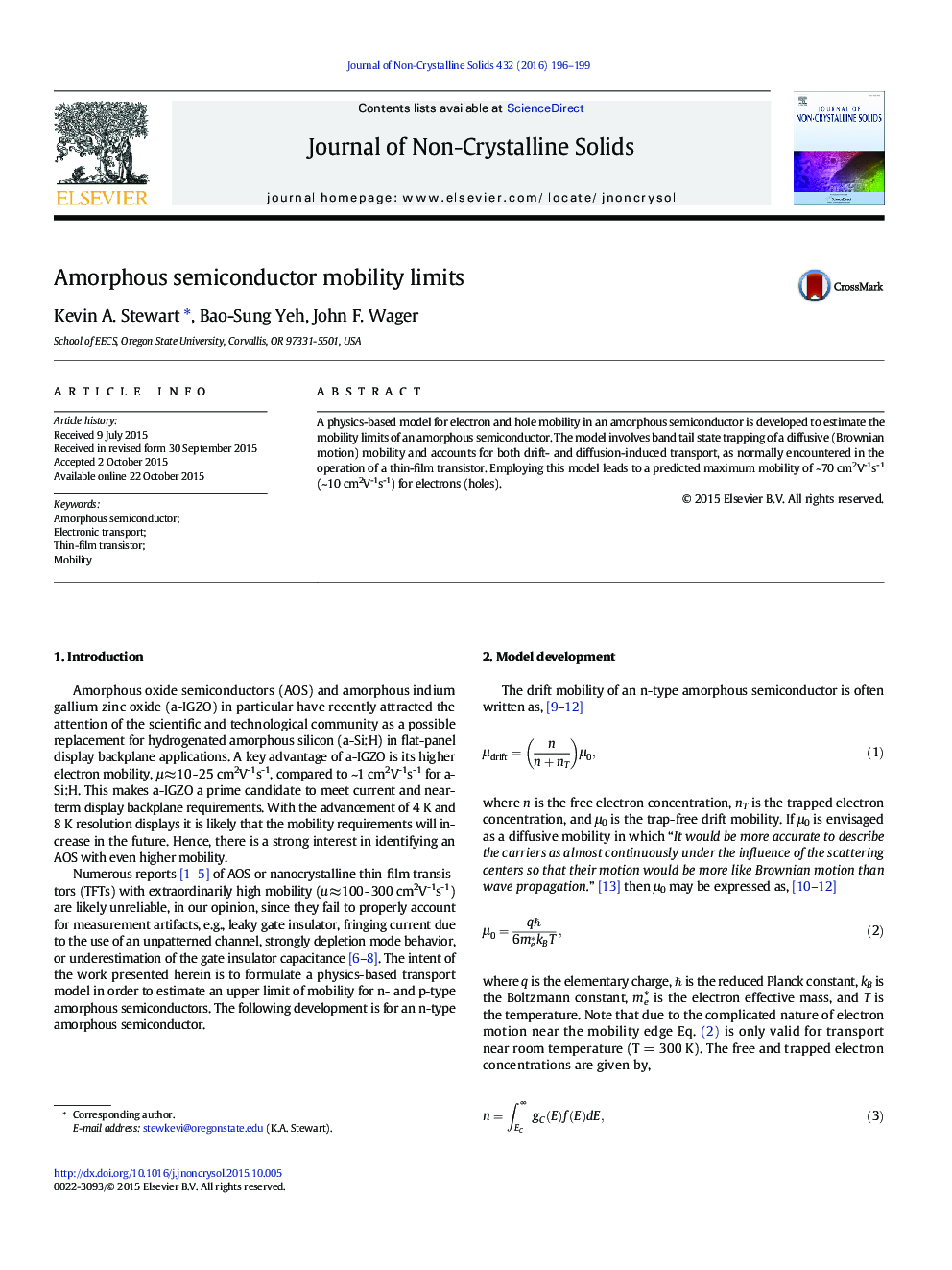| کد مقاله | کد نشریه | سال انتشار | مقاله انگلیسی | نسخه تمام متن |
|---|---|---|---|---|
| 1480404 | 991462 | 2016 | 4 صفحه PDF | دانلود رایگان |
• A physics-based model for mobility in an amorphous semiconductor is developed.
• The maximum mobility of a thin-film transistor is estimated.
• The nature of disorder in an amorphous semiconductor is discussed.
• Decreasing the band tail state density and the effective mass are key.
A physics-based model for electron and hole mobility in an amorphous semiconductor is developed to estimate the mobility limits of an amorphous semiconductor. The model involves band tail state trapping of a diffusive (Brownian motion) mobility and accounts for both drift- and diffusion-induced transport, as normally encountered in the operation of a thin-film transistor. Employing this model leads to a predicted maximum mobility of ~70 cm2V-1s-1 (~10 cm2V-1s-1) for electrons (holes).
Journal: Journal of Non-Crystalline Solids - Volume 432, Part B, 15 January 2016, Pages 196–199
